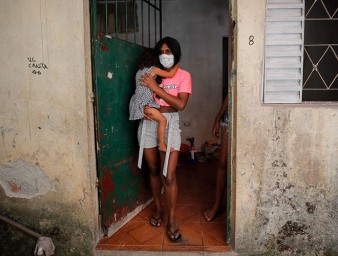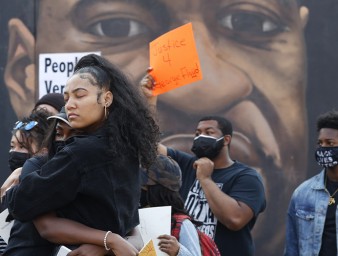Foreign fighters: emerging challenge for human rights
20 April 2016

An estimated 30,000 people are fighting in armed conflicts outside their country of residence across the world.
The motivations of these foreign fighters, but more importantly, their effects on communities, including when they return to their home countries, are the focus of a multi-year study by the UN Working Group on the use of mercenaries as a means of violating human rights and impeding the exercise of the rights of peoples to self-determination.
“We are seeing a rather frightening phenomenon of people going from country to country, engaging in wars, sometimes purely for profit, sometimes for ideological reasons,” said working group member Gabor Rona. “They come and they fight. And then they may go back to their home country and as a result of their experience they may be radicalized or go back home and engage in acts of violence and criminality.”
Foreign fighters occupy an internationally legal grey area. There are specific laws that cover mercenaries – defined as someone who is fighting almost exclusively for profit and are making more money than regular soldiers. And there are specific laws that address those foreign fighters who join terrorist organizations. However, there are many foreign fighters who fall into neither category, Rona said.
“There is a whole activity and development that creates risks for the security of States and for people,” he said. “We want to encourage a conversation among States, NGOs, and all potentially affected people concerning the consequences of this phenomenon, especially to civilians.”
For more than two years, the working group has been gathering information on the emerging foreign fighter issue, Rona said.
“We want to find facts about who is recruiting these people, what their motivations are and, importantly, to follow up. When and if they survive the conflict and go back to their home country, [we want to know] have they brought back knowledge and experience about the war that creates a security risk in their home country,” Rona said.
The working group has visited countries including Tunisia, Belgium and Ukraine. Group members have spoken with parties on both sides of conflicts, as well as with journalists, NGOs and civilians.
They have also held panel discussions with other experts on the issue. The most recent panel “Foreign Fighters and New Forms of Mercenarism,” took place in Geneva this month. Participants discussed if foreign fighters are a contemporary form of mercenary-related activity and implications for accountability and remedy.
Yet, are foreign fighters that contemporary? History is replete with accounts of people who have fought in wars outside the country they reside in. Think of Ernest Hemingway fighting in the Spanish Civil War. How are today’s foreign fighters different from these people?
Rona said the issue is not differences between past and present foreign fighters. It is what effect does fighting in an informal military structure -- with a lack of accountability, discipline and design, as is the case with many of the groups foreign fighters take part in – have on the psyche of those who take part. And how can States best handle their return.
“What they need more help with is how to stop the cycle of violent and anti-social behaviour that preys on communities. In that respect I am hopeful that our findings can pinpoint the cause and motivations of particularly what happens to people when they come back home from war,” Rona said. “And through that information we can provide a factual basis that states and civil society can use to implement and create rehabilitation mechanisms rather than just punitive ones to help ameliorate these risks that result from the experience people have when they go off to war and come back home.”
20 April 2016



